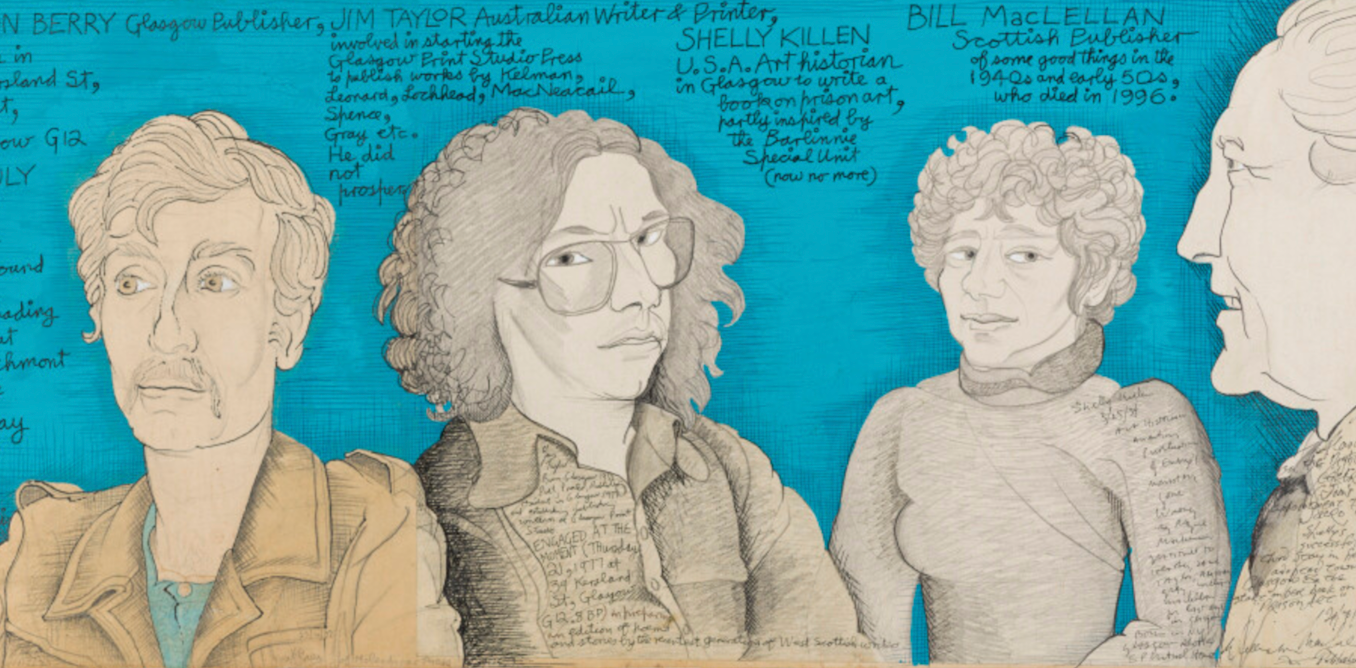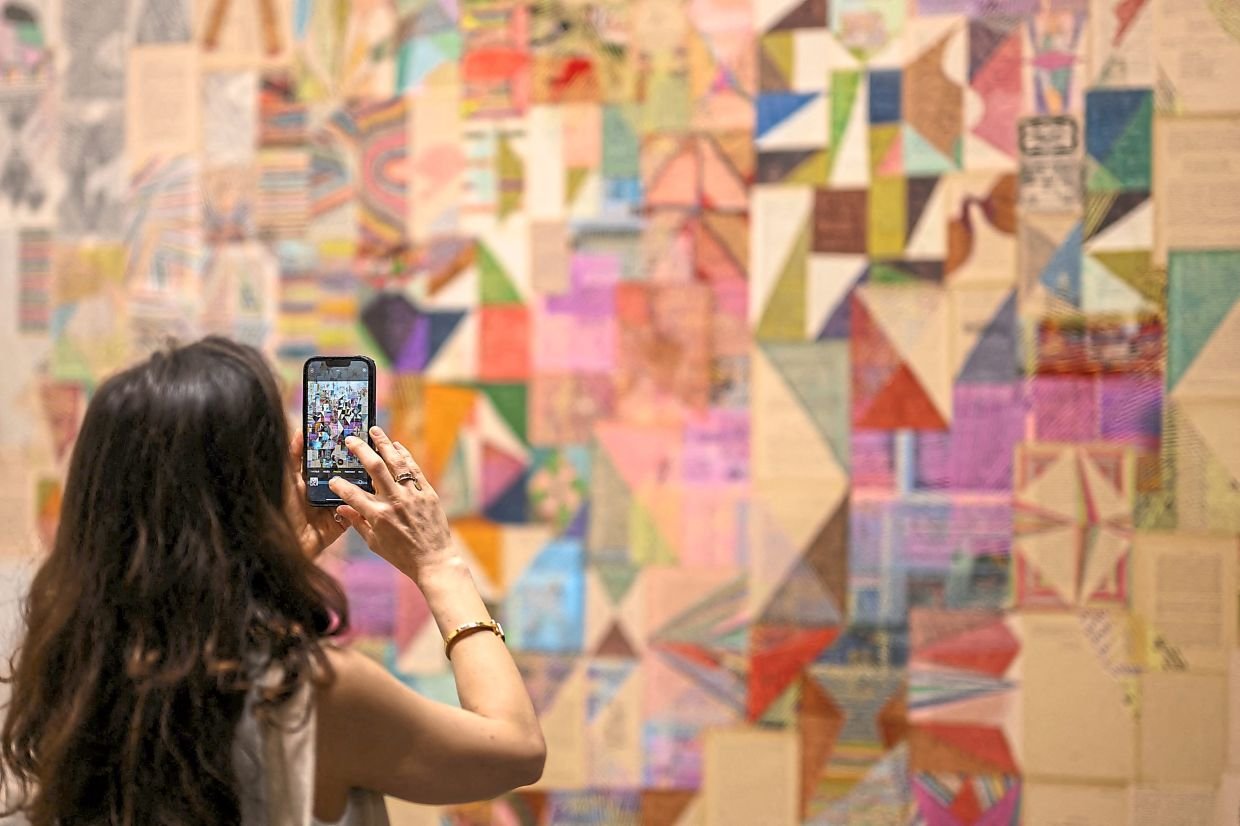One hundred years ago, a sprawling international exhibition was staged in Paris. It was intended to dazzle visitors with all that was new in architecture, design, fashion, and jewelry, and to establish France as the unassailable arbiter of taste of the western world. Called “L’Exposition internationale des arts décoratifs,” it ran from April to October 1925, attracted 16 million people, and was a celebration of Modernism and Art Deco design.
It occupied nearly 70 acres of central Paris, on both sides of the river Seine, with 20 countries building bespoke pavilions that celebrated the new progressive style—sleek and geometric—inside and out. Needless to say, around two-thirds of the exhibitors were French.

The pavilion of Galeries Lafayette at the International Exposition of Modern Industrial and Decorative Arts in Paris (France). In 1925. (Photo by adoc-photos/Corbis via Getty Images)
Art Deco is a design movement that emerged in the 1920s and 1930s, defined by bold geometry, rich colors, and lavish ornamentation. Blending influences from Cubism, Futurism, Bauhaus, and ancient Egyptian, Aztec, and African art, it exudes luxury through sleek symmetry, exotic materials, and jazz-age opulence. Art Deco was modern but not necessarily restrained.

Au Revoir’, 1920. (Photo by Historica Graphica Collection/Heritage Images/Getty Images)
One of its key figures, Emile-Jacques Ruhlmann, made work so ridiculously luxurious that a few pieces could cost the same as a whole house. A small lady’s desk, for example, was a dainty macassar ebony box lined in exquisite red leather with ivory and aluminium handles and silken tassels. It stands on gazelle-like mahogany legs inlaid with silver. Chairs had the very slenderest arms and legs in macassar ebony arms, like lines drawn in the air, with seats in fine velvet. Wallpapers were decorated with vividly colored geometric flowers—bright pink on a navy ground perhaps—but to the highest specification.

A Collector’s Study’, circa 1925. Arranged and Furnished by Émile-Jacques Ruhlmann (1879-1933), mural painted by Jean Théodore Dupas (1882-1964), carpet by Fontaine. From The Studio Volume 92. (London Offices of the Studio, London, 1926)(Photo by The Print Collector/Getty Images)
For the 1925 exhibition, Ruhlmann designed the interior of the Hotel du Collectioneur, one of the highlights of the whole affair. Inside a pavilion by Pierre Patout, where dancing nymph-like figures framed the entrance, Ruhlmann assembled the best of Parisian craftsmen to create wallpapers, textiles and lacquered and veneered furniture that together made a completely harmonious interior. The idea of a unified room, where all parts coalesce, was quite new, and is a style of decorating that prevails even today.

A woman with an Art Deco jeweled headpiece powders her face while her attendant hovers nearby, Hollywood, California, circa 1924. (Photo by Underwood Archives/Getty Images)
In the United States, the Deco style appeared in architecture. It was epitomised by buildings like the Chrysler and the Empire State—dazzling exercises in avant-garde that suggested a society that was not just artistically progressive, but equally so in terms of industry and finance. The Empire State Building, which opened in 1931, was the first in the world to stand over 100 storeys high, its façade a feast of geometric decoration, its slender pinnacle soaring to the sky.

View of the crown and spire of the Chrysler Building, with its arches, triangular windows, and steel cladding, New York, mid 20th Century. (Photo by Frederic Lewis/Getty Images)
America didn’t appear at the 1925 exhibition, unable to fulfil the criteria of range, originality, and craftsmanship. Neither did Germany, a country non grata following the 1914-18 War. But there was plenty to see and debate raged. The Swiss-French architect Le Corbusier considered the bourgeois leanings of Art Deco to be the dying breath of old world values and hand-craftsmanship. His pavilion, called L’Esprit Nouveau, celebrated the machine-made, and the minimal. It functioned as a physical manifesto for a modern home, open-plan and with built-in furniture, that answered the needs of contemporary life.

Overall view of stage and proscenium of Radio City Music Hall. Courtesy of Getty.
While Corbusier’s work is sought after at auction, it is Ruhlmann and his Art Deco peers including Jean-Michel Frank and André Groult whose sale prices are now stratospheric. “The pieces are so rare, and often still in private collections,” says Elie Massaoutis, an expert in early 20th century decorative arts at Philips in Paris. “In May 2022, we sold a Jean-Michel Frank lamp, with a solid rock crystal base, for €400,000.” At Sotheby’s in New York a slender limed oak coffee table, also by Frank, sold for $596,900 (with premium) in 2023. “People would sell pieces of land to buy Ruhlmann,” says Massaoutis.

The Concorde gate at the International Exposition of Modern Industrial and Decorative Arts in Paris (France) in 1925. (Photo by adoc-photos/Corbis via Getty Images)
Unsurprisingly, the 100 year anniversary has resulted in a number of Art Deco exhibitions throughout 2025. Ruhlmann is again the star, his extraordinary output on show at the Musee des Arts Decoratifs in Paris, with an emphasis on wallpapers and textiles. The exhibition opens in March followed by a show of work by the couturier Paul Poiret in June that will run all year. Poiret is acknowledged as the inventor of modern women’s fashion, freeing women from corsetry, introducing soft, flowing lines, vivid colour combinations and higher hemlines in the 1910s, when the more organic style of Art Nouveau was still in vogue. He took inspiration from kimonos and harem pants and Greek tunics.

Woman with a Persian turban, In ‘Les choses de Paul Poiret’ by Georges Lepape, 1911, France, Paris, Musee de la mode et costume. (Photo by Photo12/UIG/Getty Images)
Poiret’s contribution to the 1925 exhibition was phenomenal: three boats that sailed down the Seine towing a grand carousel, each filled with fashion as well as furniture, fabrics, food and perfumes, like a water-born concept store. Poiret had even sold his own art collection—which included works by Pablo Picasso, Constantin Brancusi, Henri Matisse— to finance this declaration of all-inclusive taste.

The Villa Empain. Photo: Georges De Kinder. Courtesy of Boghossian Foundation.
Later in the year in Paris, the Cité de l’Architecture et Patrimoine will focus on the architects of the 1925 exhibition (opening 24 October). Among them, the Russian Konstantin Melnikov’s contribution is a masterpiece of modernism in wood and glass, composed of two glazed triangular volumes dissected by a diagonal staircase. “I wanted the pavilion to be as full of light and air as possible,” said the architect at the time. “Not everyone who walks past will go inside, but they will all see something of what’s exhibited in it thanks to the glass and the staircase that goes out to meet the crowd.”

An installation view of “Echoes of Art Deco”. Photo: Silvia Cappellari. Courtesy of Boghossian Foundation.
The exhibition “Echoes of Art Deco” at the Boghossian Foundation in Brussels (until 25 May) takes place in a peerless Art Deco building, the iconic Villa Empain, constructed at the beginning of the 1930s by the Swiss architect Michel Polak. This was once a monumental home with polished granite facades and a swimming pool, and the apotheosis of Deco style, right down to the geometric designs of its metal gates. The exhibition offers up a domestic scene of furniture and textiles, stained glass and metalwork: testament to the energy of the roaring twenties and thirties.

Art Deco stained glass (1925). Courtesy of Boghossian Foundation.
In the USA, the focus is on art, with a show of Tamara de Lempicka, the doyenne of Art Deco painters, at the Museum of Fine Arts in Houston (9 March to 26 May) and a wide-ranging exhibition at the Nassau County Museum of Art, covering everything from Tiffany lamps to artworks by Fernand Leger and Guy Pene du Bois. There was even a show of Leonard Lauder’s collection of Art Deco Architecture postcards at the Museum of the City of New York. Sorry, but you’ve missed that one.

A still from the documentary “The True Story of Tamara de Lempicka & The Art of Survival.” Photo: © 2024 Tamara de Lempicka Estate, LLC/ADAGP, PARIS/ARS, NY.
Art Deco’s centennial celebrations prove its enduring allure—bold, lavish, and unapologetically modern, its influence still shapes design, fashion, and architecture a century later.







